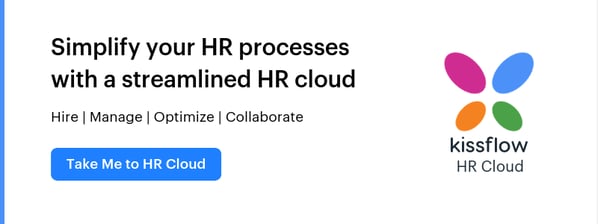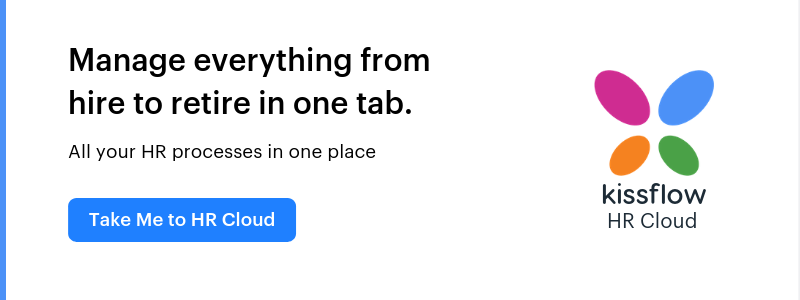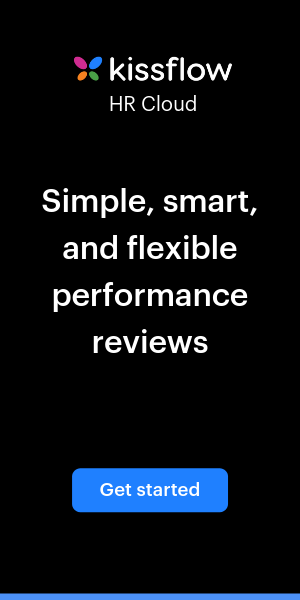Does your company give its employees regular employee performance feedback? If your answer is negative, you’re missing a great opportunity to enhance your organization’s productivity and boost team morale. Employee feedback plays a vital role in keeping employees motivated and focused on their goals.
The role of performance feedback forms in changing performance dynamics
Numerous studies about performance management reveal just how important employee performance feedback is. However, most organizations don’t seem to understand that giving employee performance feedback once a year is not enough.
Did you know that employees whose managers engage with them on a regular basis happen to be three times more productive than the ones that don’t enjoy regular interactions? What’s even more impressive is that 43 percent of the most motivated workers receive employee performance feedback forms at least once per week.
Why is employee feedback so important?
Numerous studies about employee feedback surveys reveal they enhance employee satisfaction and in turn influence an organization’s growth. It is critical to check employee engagement levels regularly.
When employees feel their opinions matter, it will make them feel valued and give them a sense of ownership and responsibility, which boosts their morale and productivity.
Employee feedback forms are important because they:
- Determine employee engagement levels
- Gauge the existing work environment
- Unlock the issues causing employee churn
- Boost employee trust
- Identify employee needs
- Empower the workforce
- Offer insights on management’s performance
- Generate useful ideas
All these reasons point to one logical conclusion—employee feedback forms are incredibly important. However, to obtain valuable feedback from employees, it is essential to determine the methodology that is best suited to your organizational needs.
The disadvantages using of manual performance feedback forms
When you are initially setting up a performance management process, manual performance feedback forms can seem quick easy and necessary. However, as the organization continues to grow, paper filing becomes rather cumbersome.
Manual performance feedback forms:
- Are prone to damage
- Can be misplaced and/or lost
- Take up a lot of space
- Lack security measures
- Demand deduplication of data
- Cause inconsistency and room for errors
Give your routine performance feedback forms a makeover to maximize results
Paper-driven performance feedback forms have a cascading effect on the effectiveness of performance conversations. A routine performance check-in can generate a load of paperwork, and demand too many back-and-forth emails and ardent documentation to set things straight.
If your performance evaluation process runs on paper, it’s time to give it a major technology makeover. You can maximize the efficiency of your performance evaluations by redefining your performance feedback process.
1. Base assessment on the right data
It is very important for a performance review process to collect feedback from people who work directly with the employee being reviewed. The more specific a review is, the better it is to evaluate employees on their skillsets. Conducting a feedback review with people who are not really in the know of an employee will only invite convoluted data and chances of errors in the review process.
2. Do it regularly
Annual assessments are great, but they will be insufficient when it comes to boosting employee morale. As already mentioned earlier, some of the most motivated workers receive weekly employee performance feedback. Even if you don’t have the time to carry out assessments that frequently, keeping the lines of communication open will be of paramount importance.
3. Benchmark results
Although it is an important aspect, most organizations skip this step. Make sure you record the data and use it as a benchmark for the next time. Rather than storing a document and misplacing it, recording it in your HR management system or on an online feedback app will help you reassess the data when you need it.
Using an automated employee feedback system will help you record the results, plot due dates for deliverables, analyze results, and benchmark them for future comparison.
4. Design uniform criteria
Create consistent parameters to evaluate candidates instead of having a dynamic structure that allows for subjective bias to creep in. Applying this principle also ensures that you are creating a fair environment to judge people alike. It is a great way to establish transparency and credibility around your review process.
5. Frame reviews to reflect values
Review results have direct impact on what your company goals are and how employees can contribute their best to help achieve them. Therefore, you should design your review process in such a way that encourages constructive criticism and cherishes your corporate values. Make it an open forum for both the management and the employees to exchange ideas and work on their shortcomings. Tailor the performance review sessions to fit your workplace culture in order to get the best result out of it.
Automate your performance feedback form in 3 simple steps
Although most performance management systems promise the same list of benefits, their inbuilt features set them apart from each other. So, double-check whether they have vital features to ensure a hassle-free performance review process. If you choose a customizable HR suite like Kissflow HR Cloud, you can tweak the performance module to fit your process in three simple steps.
1. Customize the performance feedback form
Before the performance review process can be launched, administrators like HR leaders can edit the default performance review form to ensure it meets their unique process needs and employee roles. Administrators can set up specific KPIs and goals based on the role or department of the employee.
Unlike other performance solutions in the market, Kissflow HR Cloud’s performance feedback form enables businesses to collect qualitative feedback about an employee’s performance.
2. Configure the performance review process
Organizations have a number of options to create a performance appraisal process that suits their business needs. They can initiate self-appraisals, peer reviews, collect 360-degree feedback from external members like vendors, customers, and more.
Once the review period (monthly, quarterly, half-yearly, or annual) and necessary user permissions are set, an automated performance appraisal process is initiated during the specified review period. Employees, managers, customers, vendors, and other stakeholders, will receive an online survey that requests performance feedback for a specific employee.
3. Launch performance feedback process and improve
Once the performance management module has been customized to meet specific process needs, organizations can roll it out to the organization. Even after rolling out the process, businesses are free to make changes and enhance their performance appraisals by providing managers the option to initiate a performance improvement plan right after the review or allowing them to initiate a reward cycle for top performers.
The performance improvement plan which is tightly woven together with the training process will enable managers to enrol their underperforming employee onto a specific training program and monitor their progress continually. If the employee’s progress fails to meet expectations, organizations can choose to trigger a verbal or written warning or an automated offboarding process for that specific employee.
How does automation stack up for employee performance feedback forms?
Like many other HR processes, performance feedback has come a long way in the recent years. Thanks to the advent of digital technology, the HR department has a much better time to create the right criteria for employee evaluation, the correct way to collect data, the best ways to analyze data, and so on. More importantly, automation has eliminated many of the problems that crop in a more traditional, paper-based performance feedback form process.
Paper-based feedback process using performance feedback forms is time-consuming and extremely prone to manual errors. Overworked HR professionals are bound to make mistakes which can prove to be detrimental when it comes to giving the right feedback to deserving employees.
In case you are wondering if the performance review process in your organization should also be automated, here’s a quick answer – yes. If you want to make sure that your HR, employees, and the organization benefits from the exchange of feedback in review sessions, you should consider automating your processes seriously.
Automated performance appraisal processes are programmed to collect the right data without any room for human errors or biases. When you create an automated performance appraisal process, you have the luxury to create a centralized platform to log session details and record the feedback almost instantaneously.
The power of performance management in numbers
The employee performance feedback process is also important at the executive level because:
- Organizations with a well-developed review system see a 15 percent reduction in turnover
- 78 per cent of employees believe that recognition has a huge impact on their day-to-day work
- 69 per cent of workers are willing to commit harder to their professional tasks when their efforts are recognized
All of these statistics lead to one logical conclusion – performance feedback form is incredibly important. In order to give valuable feedback to employees, however, you have to determine the methodology that will be best suited to the needs of your organization and the specific industry.
Conclusion
Automated performance reviews not only remove the bias in the performance review, it also ensures consistency and motivates employees considerably. It also gives everyone a good idea about the criteria used in the assessment. Employees understand the necessary context and prepare themselves better for their future responsibilities with qualitative feedback.
There has never been a right time to automate your performance feedback process. As an industry-wide problem, management and HR teams must own their responsibilities to ensure a fair, hassle-free, and consistent performance review process for employees to fulfill their goals and help the organization succeed.
Unlike standalone performance management apps, Kissflow HR Cloud will help businesses create a performance driven culture by streamlining the hire-to-retire cycle seamlessly. Best of all, you can test out the power of our performance review module with a free trial before committing to it. Take Kissflow HR Cloud for a spin today and see the difference automated performance feedback forms can make.


